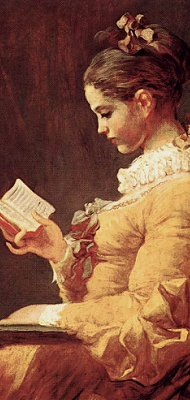I’m not new to it. I have been using it for years for my
modelling portfolio. It’s a great place to store pictures while
maintaining their quality, and a great way to promote your work and meet
like-minded people and come across possible business opportunities. I have never used it as a
photographer though. Although in my eyes it’s an art to be admired but I
completely lack those skills and am not at all good at it.
Some of the useful features I have come across are as below:
It’s free- unlike other similar photo-sharing websites which
are either not free or their free accounts they offer are literally unusable.
Flickr free accounts give you a generous allowance and many useful features.
Tagging system- It’s very useful and very easy to do and it
gives you the opportunity to be promoted for free for those who are looking for
the same tags.
Privacy settings- It gives you a lot of flexibility to be a
private or as public as you like. And it could be worked with either individual
photos or sets.
Organising feature- Creating sets is a wonderful way to
organise your photos, and the easy “drag and drop” feature makes it a pain-free
and enjoyable task.
Phone App- Excellent feature! Allows you to take your
whole photo collection with you on your phone without using up the space on
your phone. However there is a downside to it; Although it allows you to email
and share on Facebook/Twitter, etc. you can’t directly save photos from it to
your phone
Now here are the things to be aware of specially to do with Creative Commons and
copyright issues:
Theft- It’s something I have come across many times in my
career. I do work both of TFP/TFCD (time for print, time for cd) and paid
basis. And I always sign a “
Model Release Form”, it’s the best way to protect both the model and the photographer.
Photographer owns the rights to the photos but as a model you get to do what
you agreed on the release form with it. The usual terms are if the pictures are
used for commercial use both people (the model and the photographer) should
have an agreed share of the profit; You are usually not allowed to make any
changes to the pictures unless running it past the Photographer; And the
obvious one of the pictures are not allowed to be used for any indecent
purposes.
However saying all this I still had my pictures being sold
by various photographers in
large prints behind my back, and since I don’t have the money to take
them to court for it, I just have to add them to my blacklist and not work with
them again. And in some cases flag them up as dangerous cases on modelling and
photography websites so other people won’t fall into the same trap.
The other thing that’s happened to me on various occasions
was for people to steal my pictures, removing the watermarks with Photoshop and
posting them as their own on websites such as Facebook. Now admittedly FlickR
is very good in dealing with cases like this (however it does put you in a
vulnerable position by offering a high quality versions of your pictures,
making it very easy for people to steal them) but if you notice something on
FlickR that you believe has been stolen from you or someone you know. They are
very good at getting it removed.
Look at the two pictures below: friends of mine found thebottom picture to be used as someone’s profile picture on Facebook. As you can see from the original picture (the one at the top) not only they changed all the colours and background but they were cheeky enough to remove my name that was put at the top by the photographer and the photographer’s logo at the bottom of the page:
Bottom line is you can do as much as you can to protect
yourself but when something of yours gets stolen, unless you have the money and the means to take the
person to court, then you are pretty much helpless and by sharing things on
internet you do put yourself in a vulnerable position. So it is free promotion
but sometimes with a hidden cost.
Solution: In my opinion the best solution is to make your
whole Photostream Private/Friends only and just send the links to those whom
you trust. In the privacy section it’s got an option to stop your account even
appearing in searches. Mine is usually set to private but for the purpose of
Sot23 I have made it public for a little while.
I don’t think I’m going to take part in the competition
with my portfolio though. Although I’m free to use the pictures I have up on my FlickR account
but I’m not the photographer, and I think all the credits for a picture should
go to the photographer. So I think it would be very unfair of me to take part
in it using those.
I'm going to add a couple of the scenery I took with my IPhone
However here’s a link to my FlickR account for those who
are interested:
http://www.flickr.com/photos/azadehbrown/







